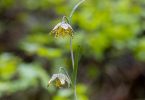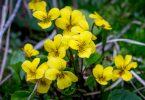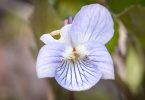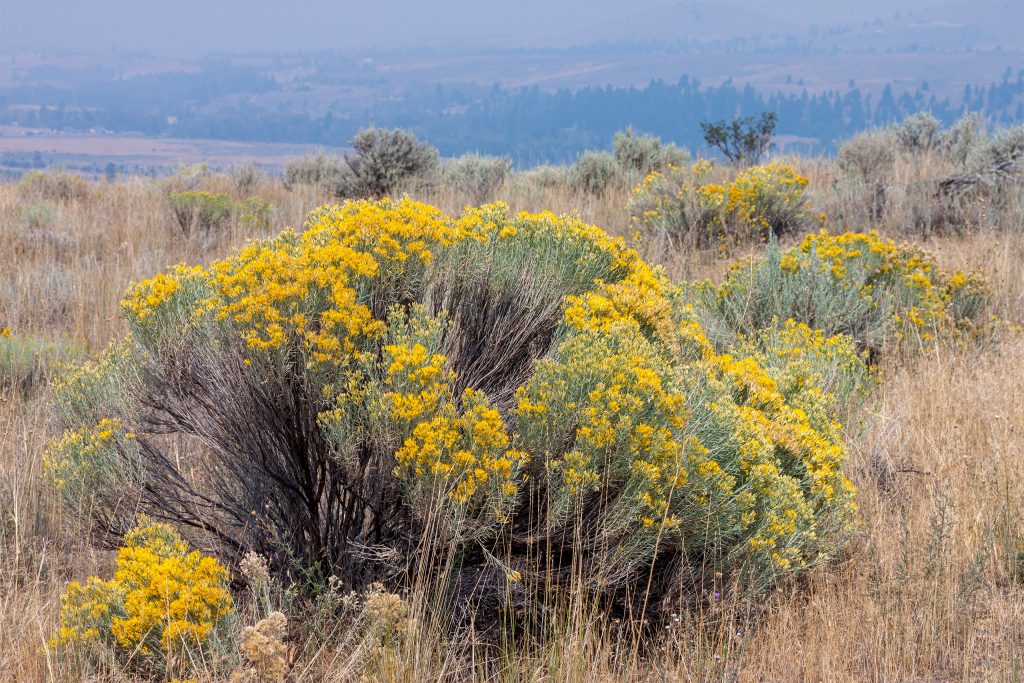
Valuable nectar source
Rubber Rabbitbrush (Ericameria nauseosa) referenced both online and in print as important for butterflies: a) “numerous bees and butterflies are attracted to the flowers” (Calscape – California Native Plant Society); b) “Migrating Butterflies Love Rabbitbrush” (Kathy Keeler blogpost); c) “pollen source for insects late in the summer” (US Forest Service – Plant of the Week by Sarah Malaby); d) “Rubber rabbitbrush attracts a wide array of native insects, including butterflies and small bees… It is one the few native plant species in the Intermountain West that provides habitat for pollinators during the late summer and fall months.” (Plant fact Sheet for Rubber Rabbitbrush 2010); and e) “It grows wild throughout the area (southeast Arizona) and its nectar flow seems magnetic to butterflies-nearly 50 different species are often sighted during the fall (Southeast Arizona Butterfly Club) field trip” (Hurwitz 2018 page 259). Only a couple of these publications identify what butterflies use or likely use Rubber Rabbitbrush…a mere list of four species: Painted Lady, Monarch, Northern Checkerspot and Sagebrush Checkerspot.
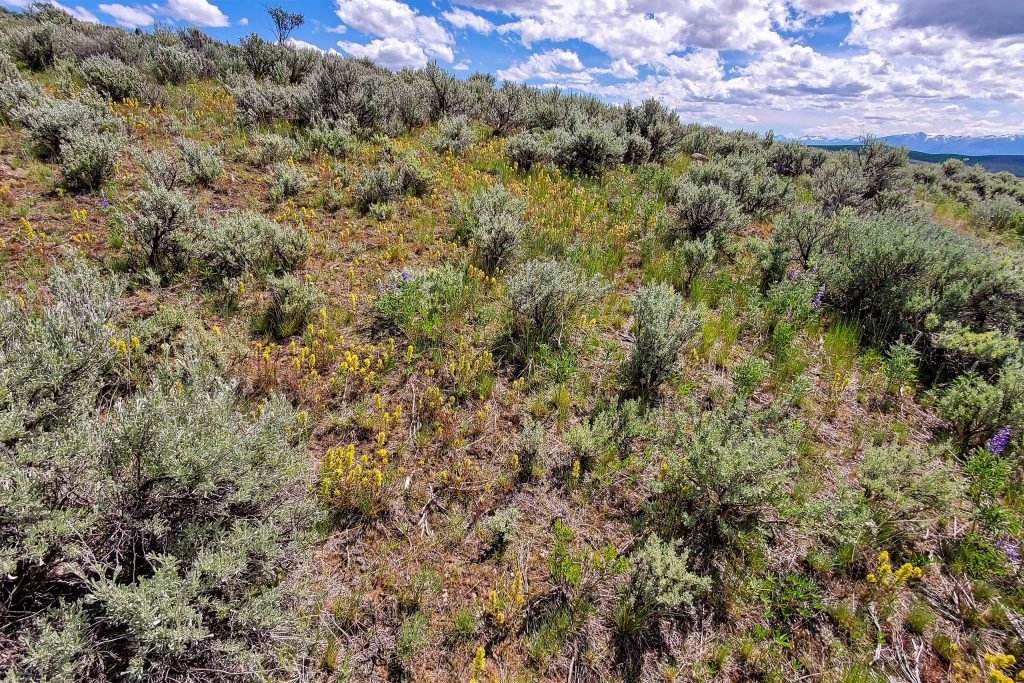
Species that use Rabbitbrush
Caldwell (2014) describes why that could be: “There are few systematic studies and many observations…are merely incidental…” His 414 page publication, California Plants as Resources for Lepidoptera: a guide for gardeners, restorationists and naturalists, details the plants butterflies use there for nectar and importantly why he did so: “was originally undertaken especially to serve people with butterfly gardening in mind. Or people with moth gardening in mind – a new possibility with our increasing knowledge. Previously published advice about attracting butterflies seemed to me to be unhelpfully scattered and vague and I wanted to provide something more useful. I hope it will also prove useful to lepidopterists and other biologists and those engaged in ecological restoration. I and others are alarmed at how few butterflies – and hosts of other interesting creatures — can be seen in urban, suburban, rural and even wildland areas nowadays as compared to my memories of several decades ago.” He provided a list of 69 species of butterfly culled from publications (“records were pulled from scores of sources of varying reliability, though often from photographs”) that utilized Rubber Rabbitbrush for nectar.
Western Montana butterflies that nectar from Rubber Rabbitbrush
This post builds on Caldwell’s efforts by providing visual documentation for 21 species of butterfly from the Bitterroot Valley of western Montana that nectar from Rubber Rabbitbrush (gallery below).

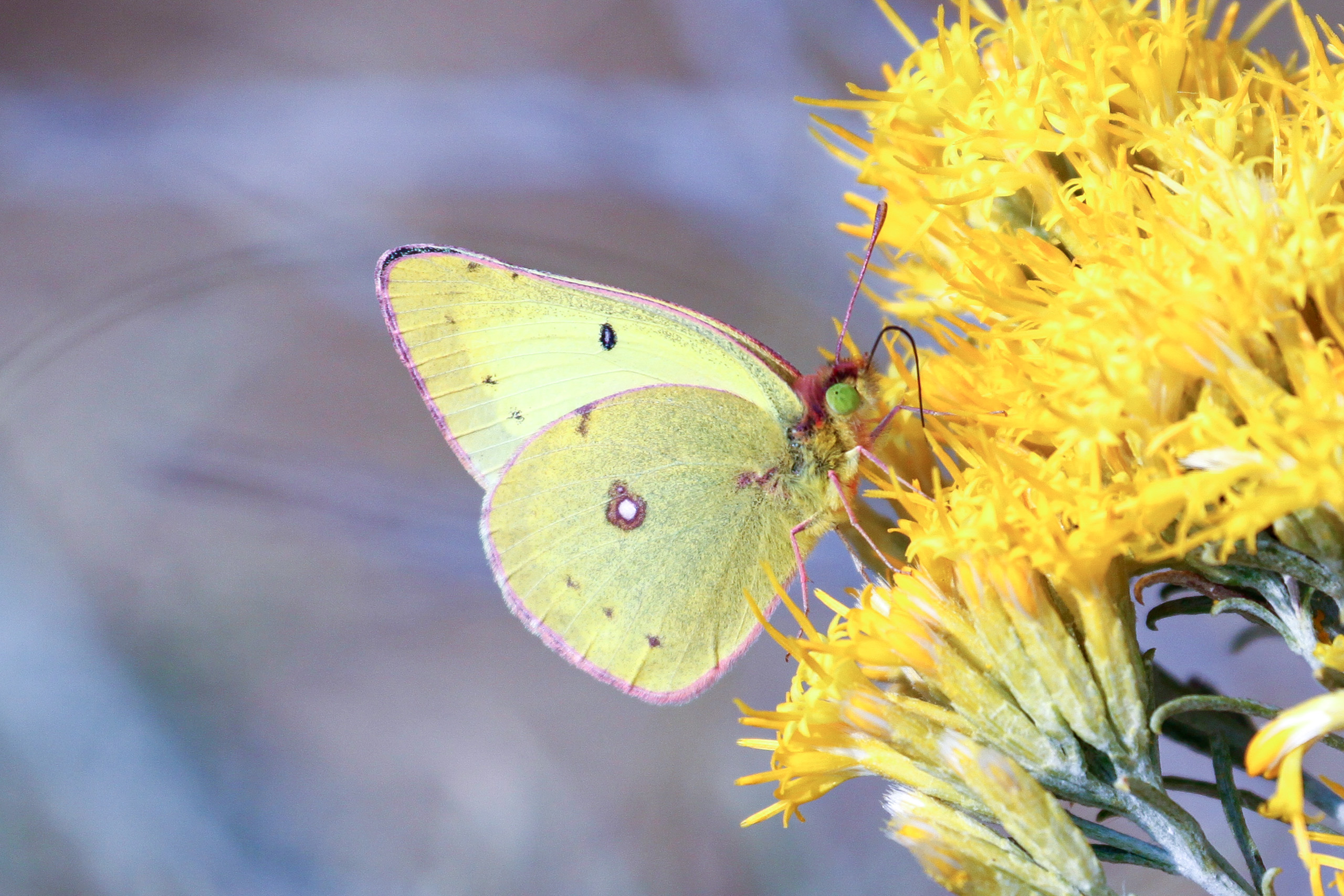
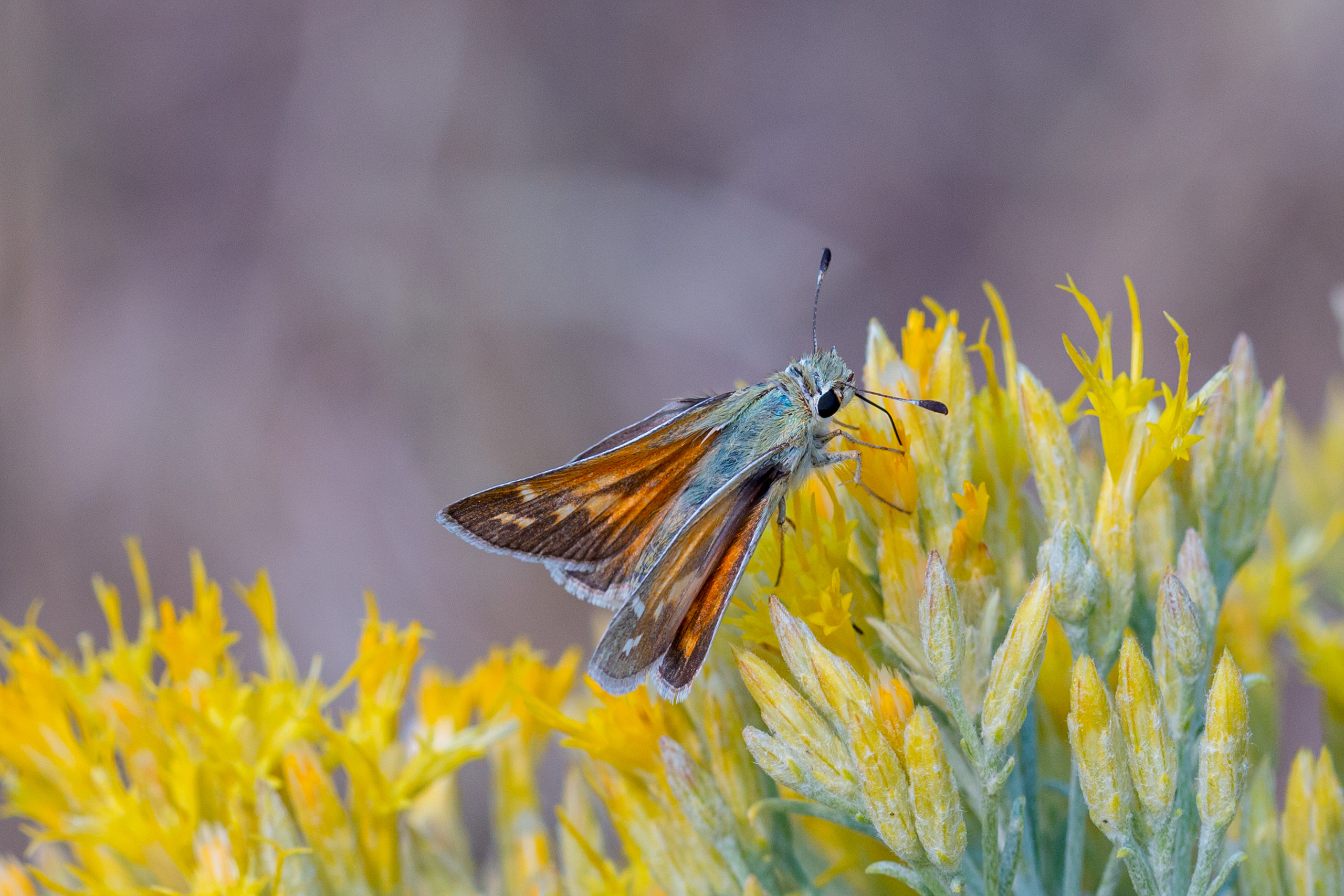


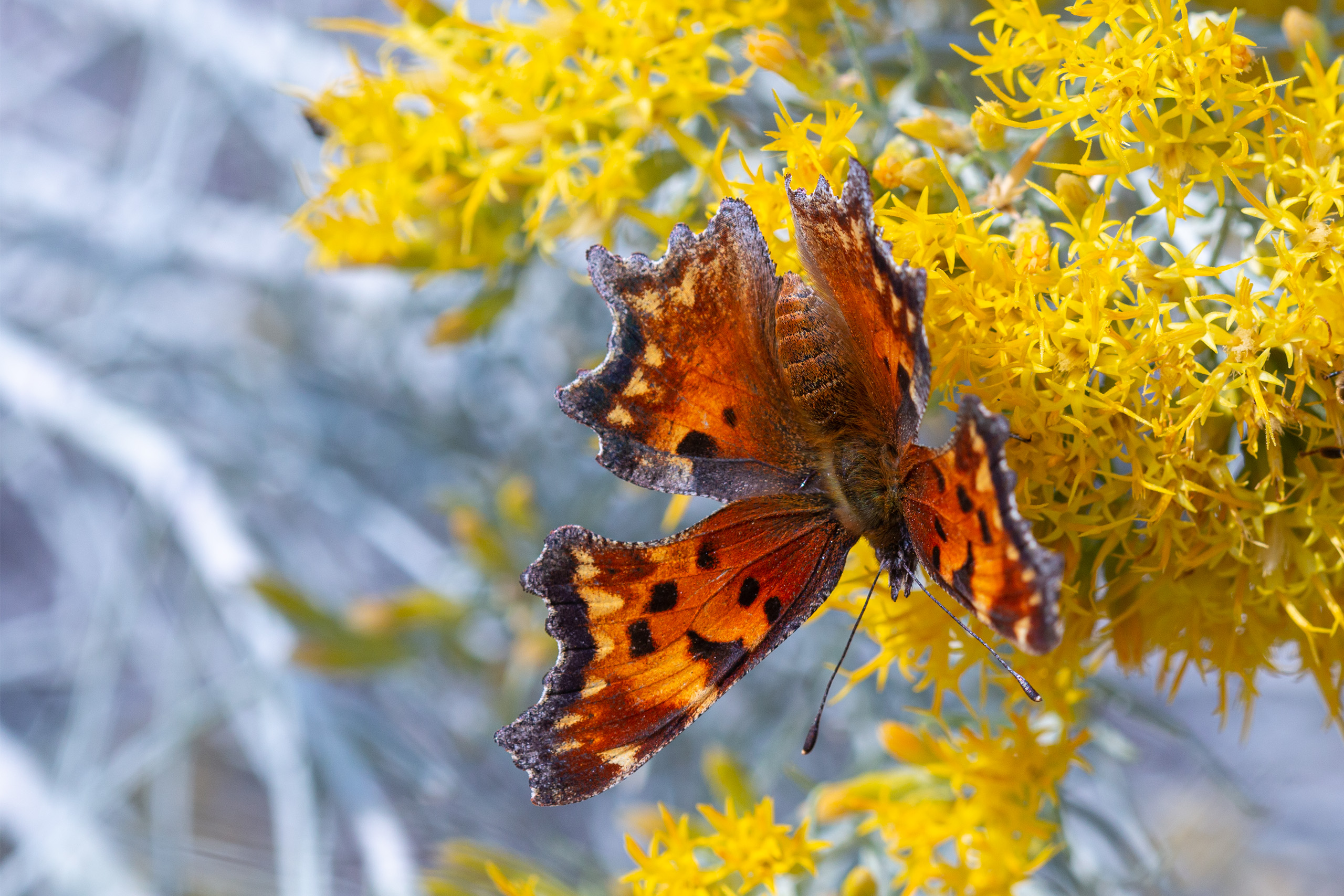

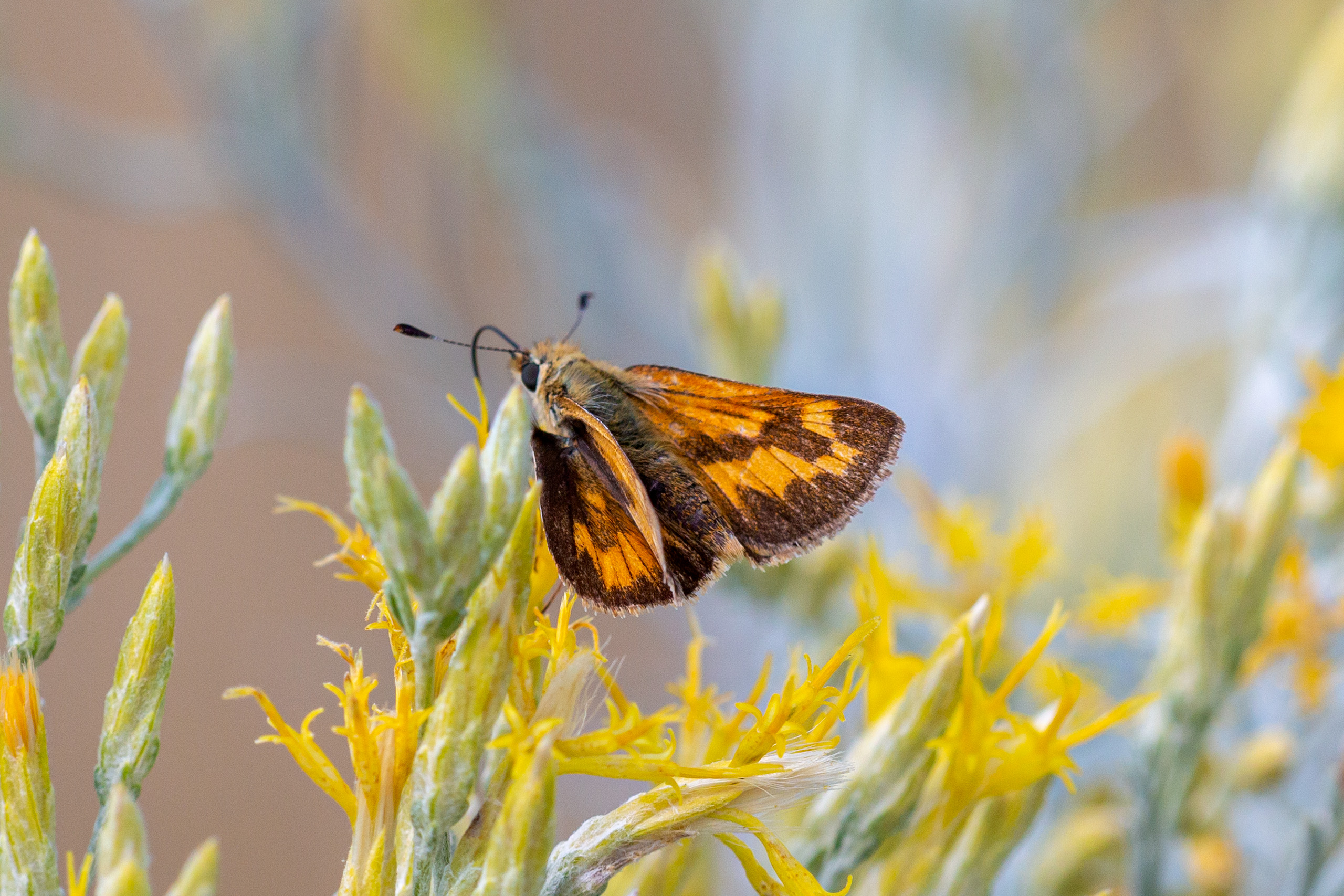
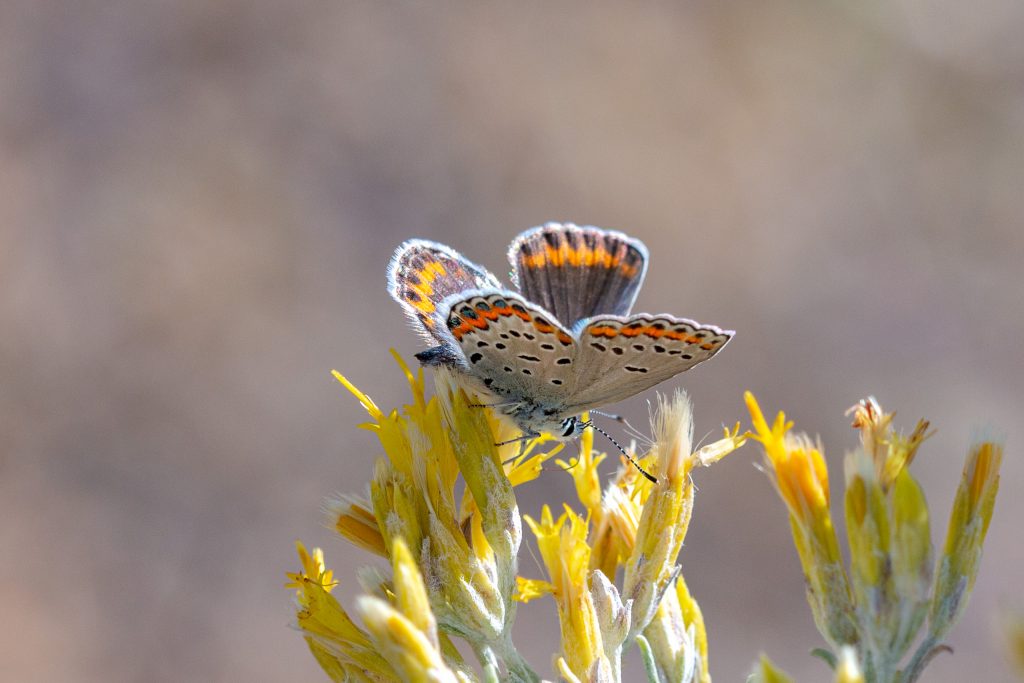

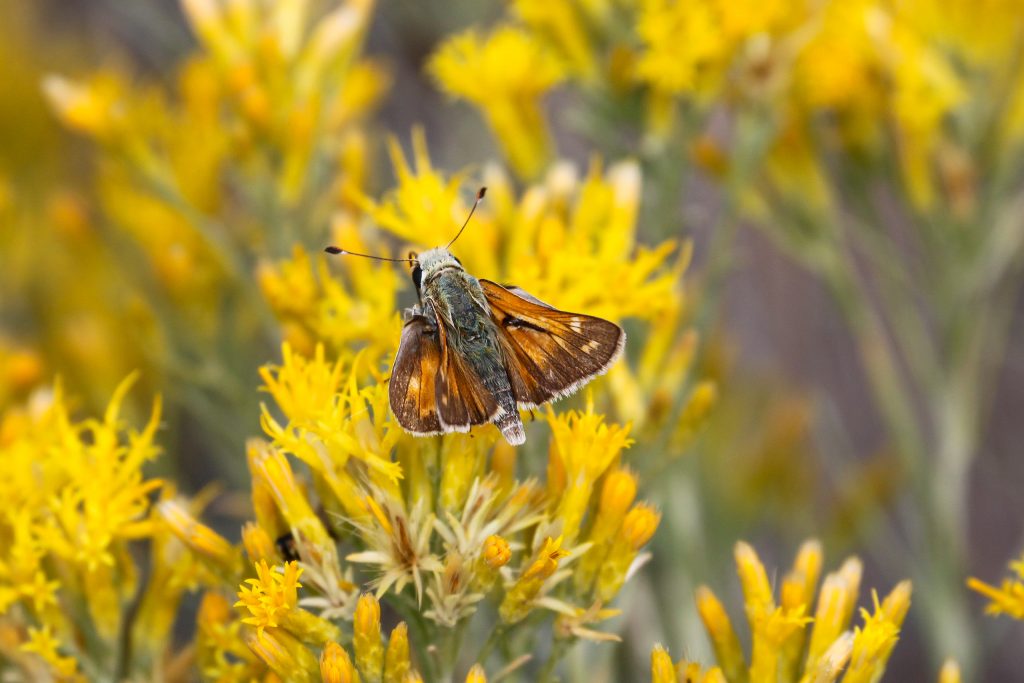

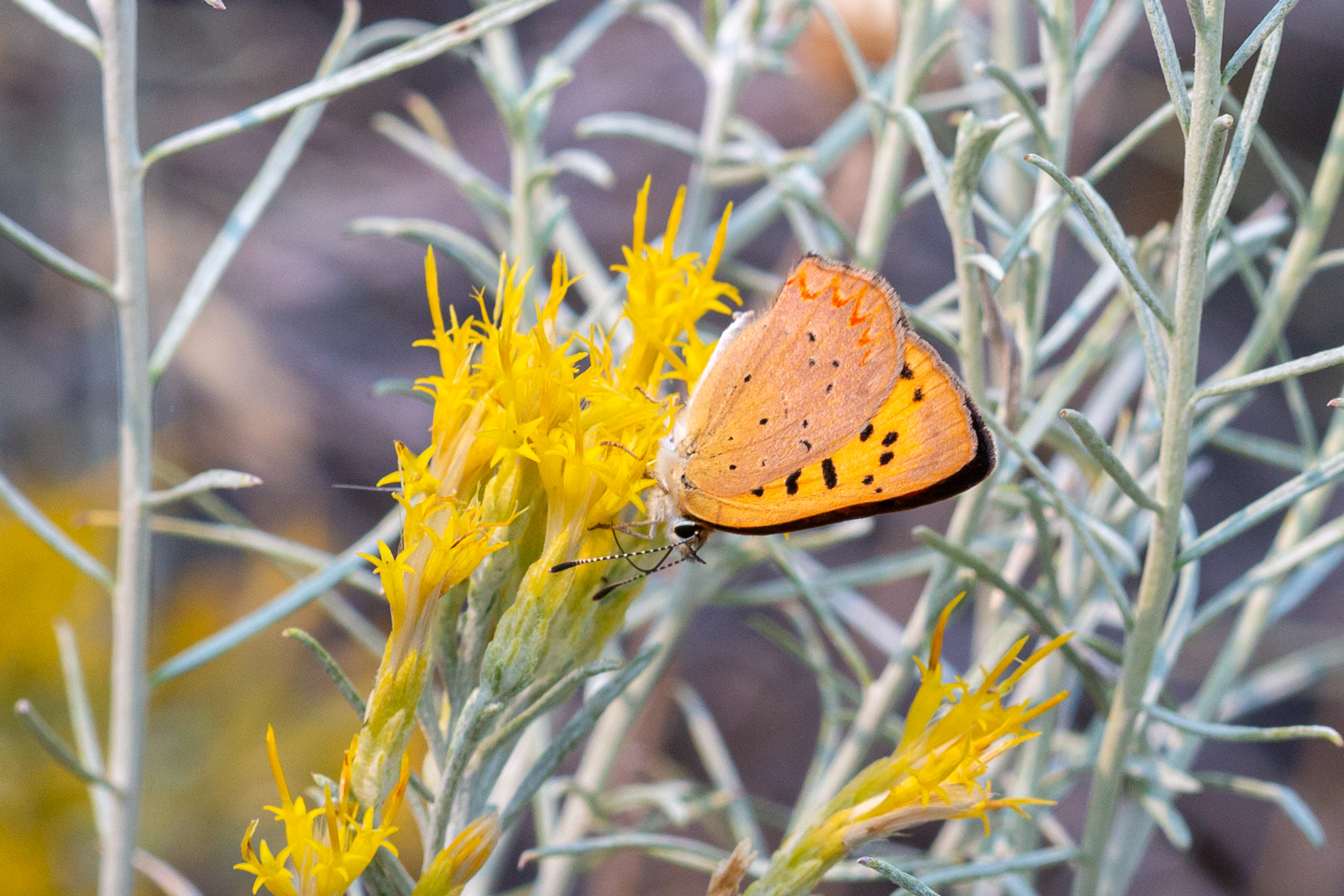
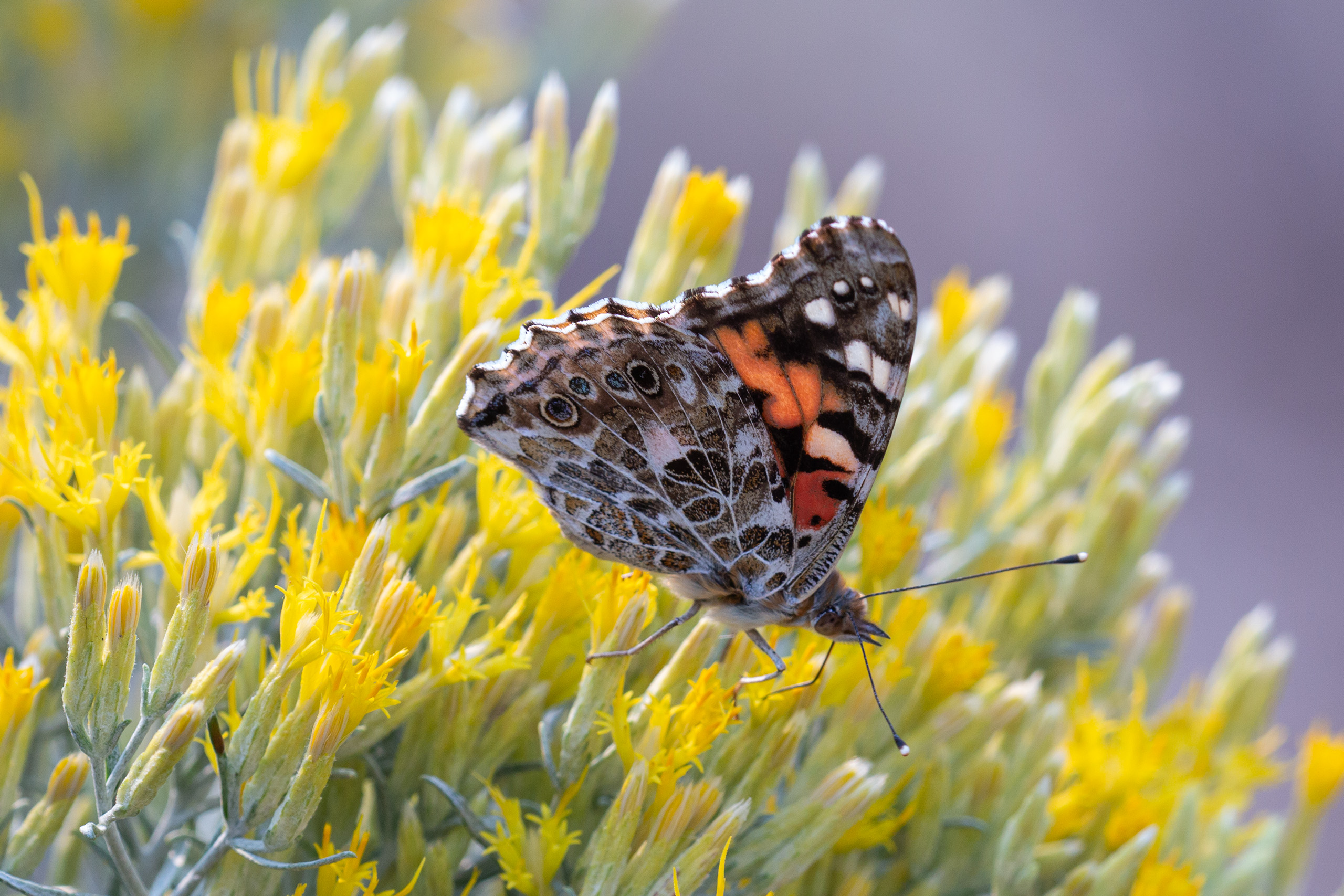

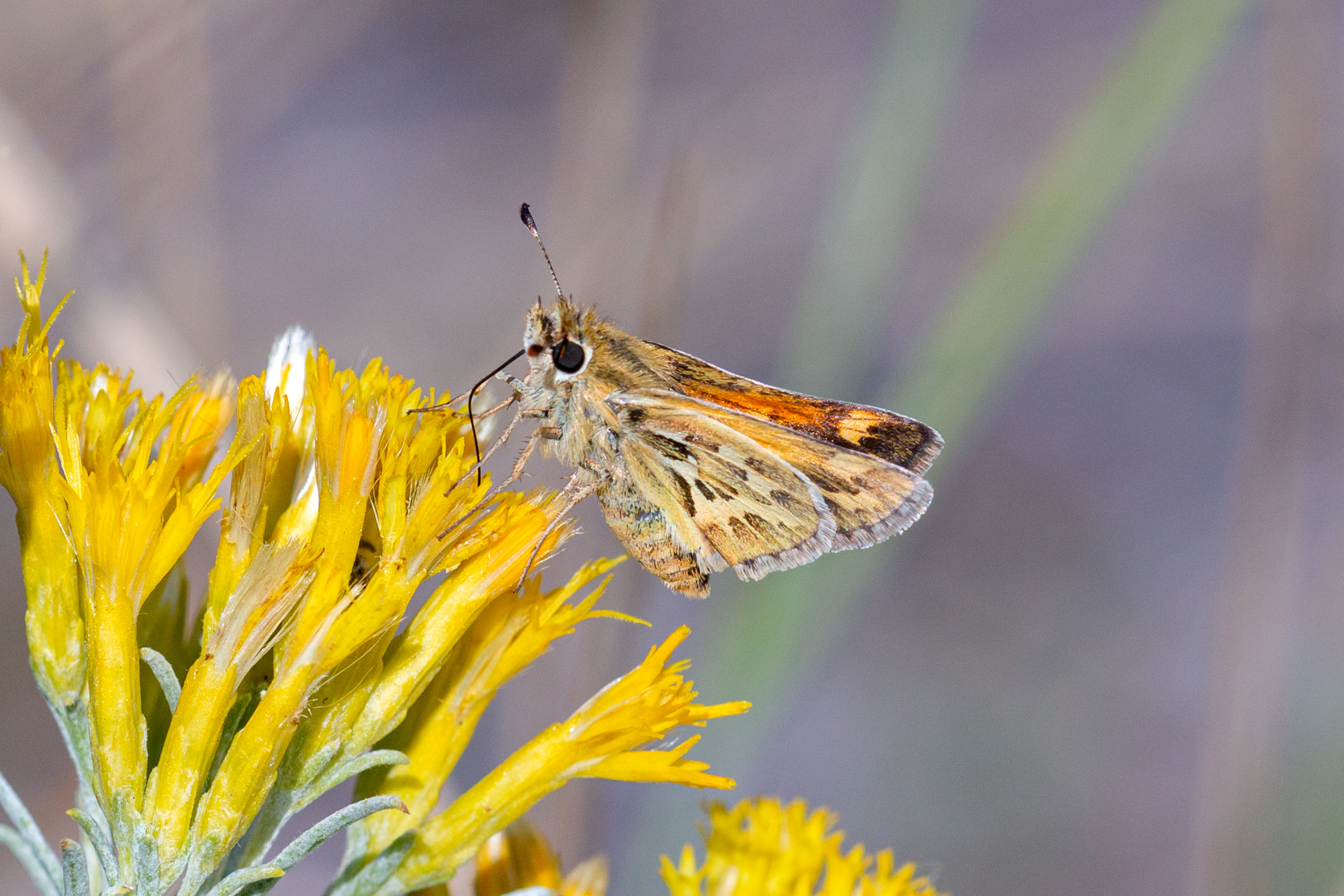

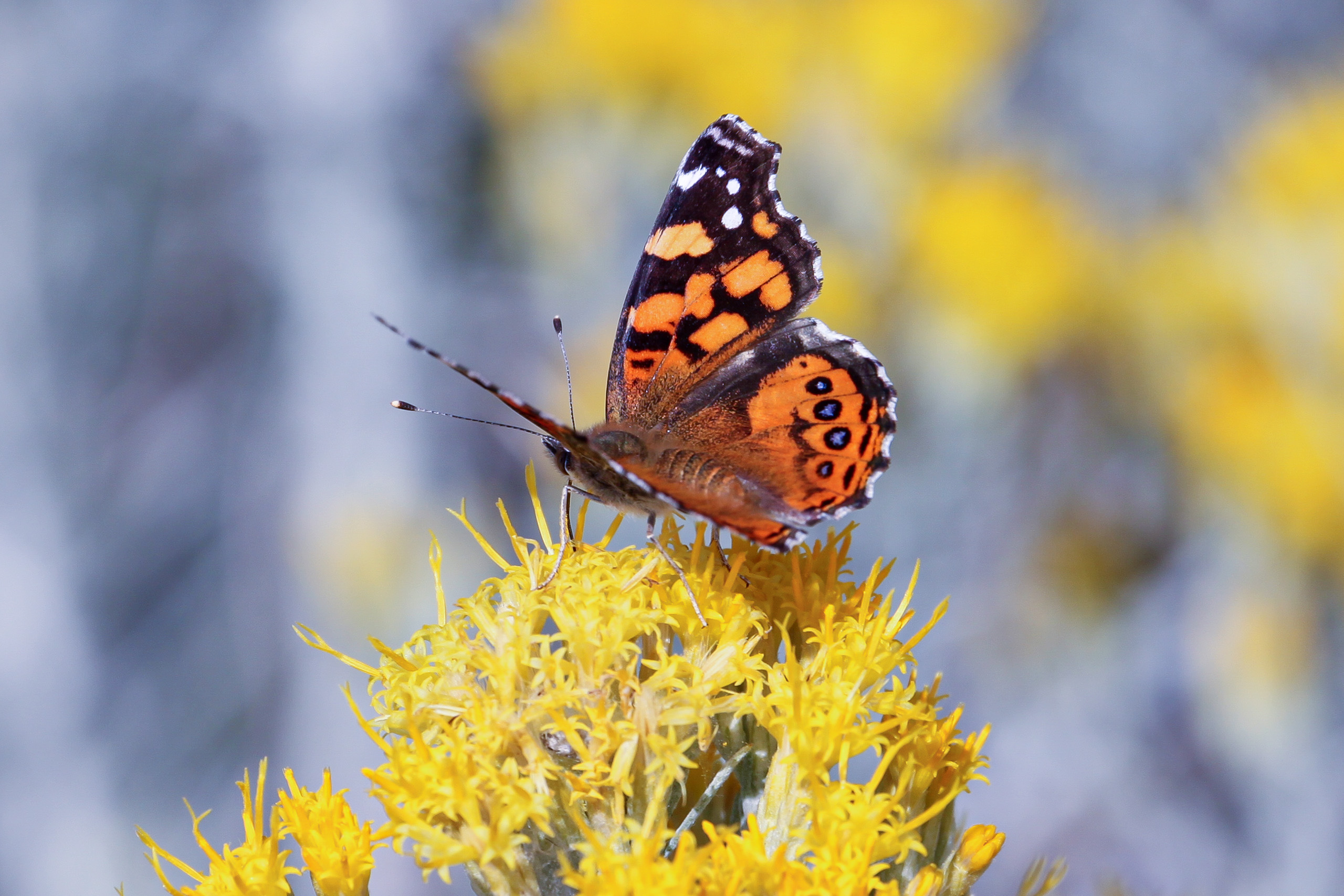
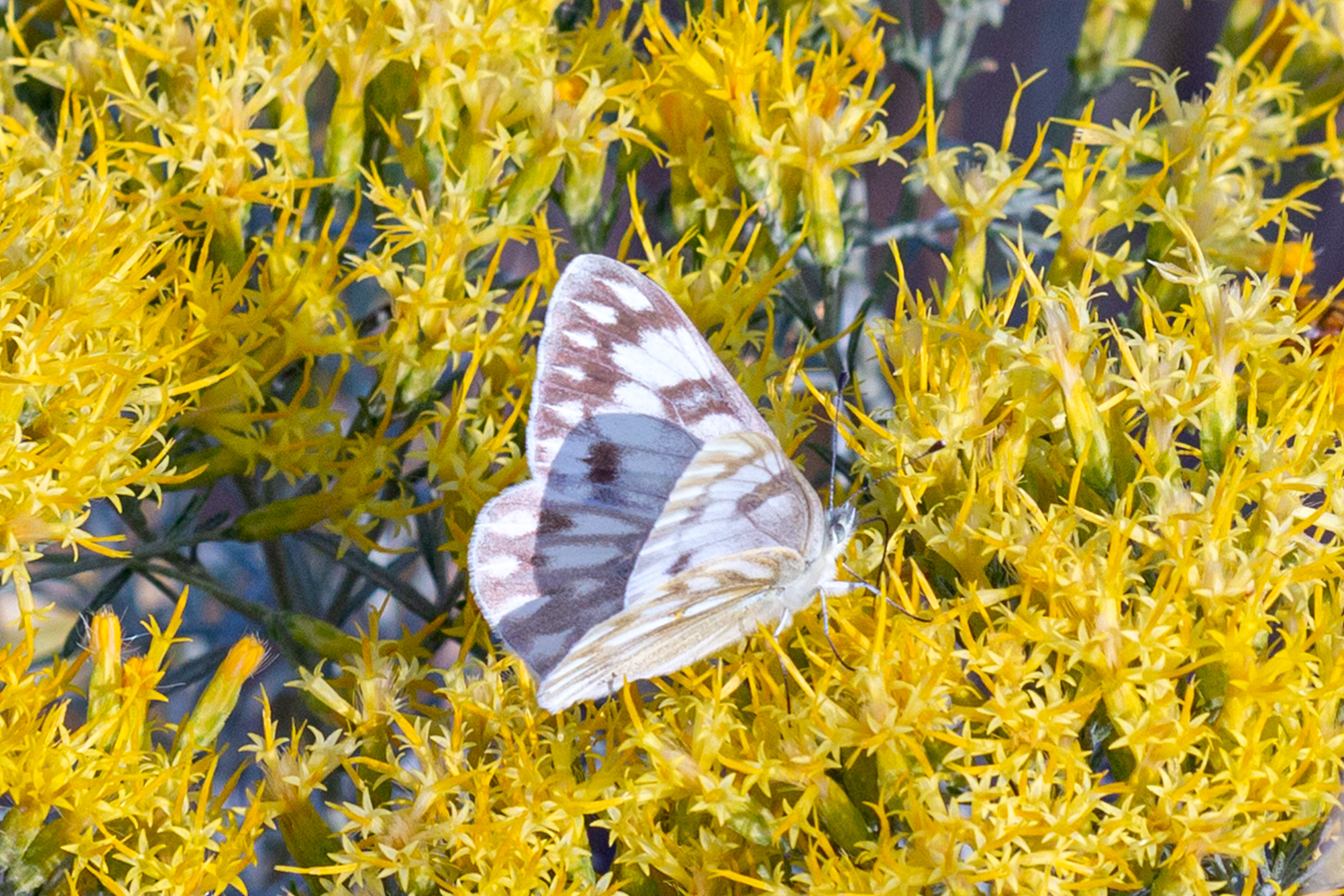
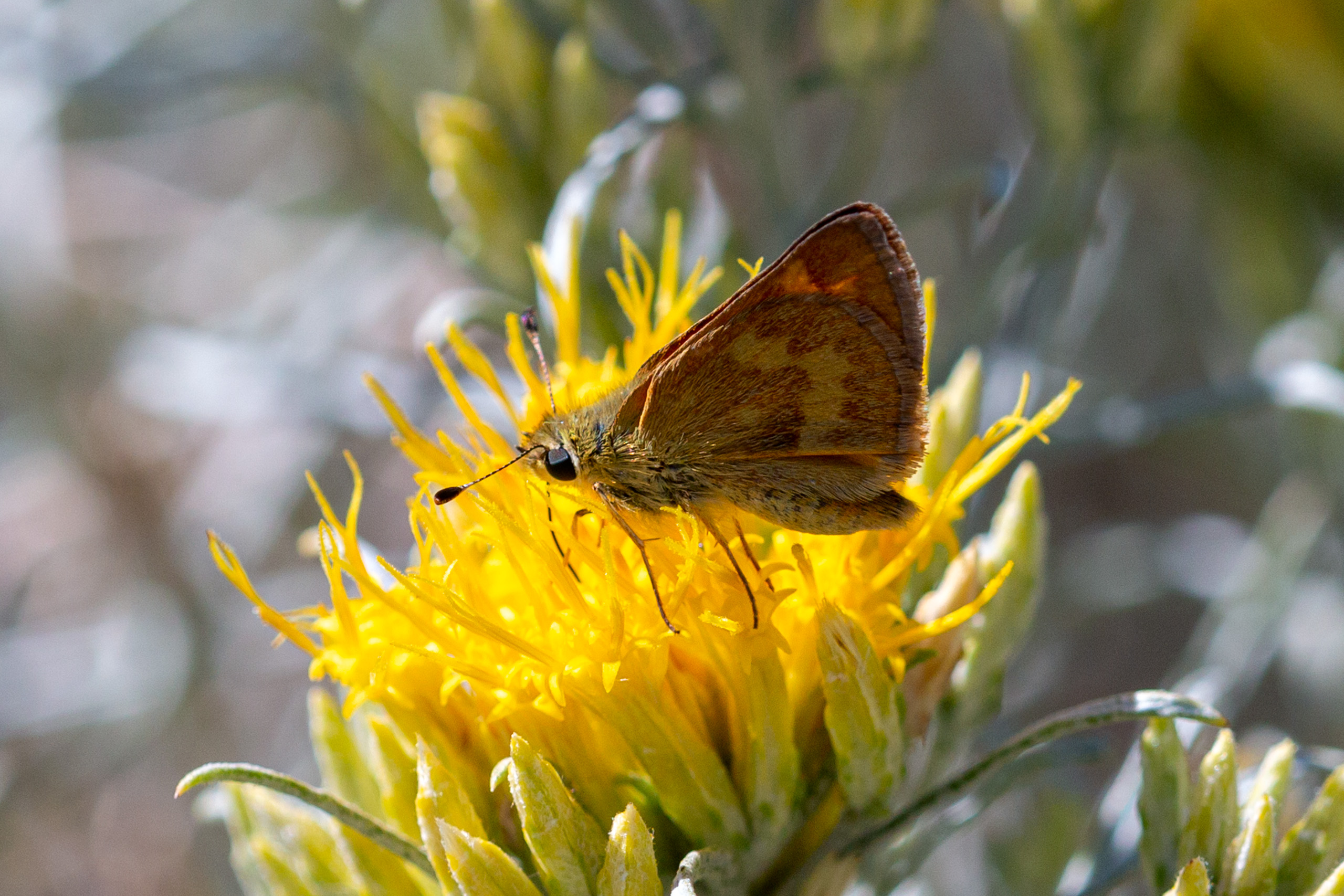
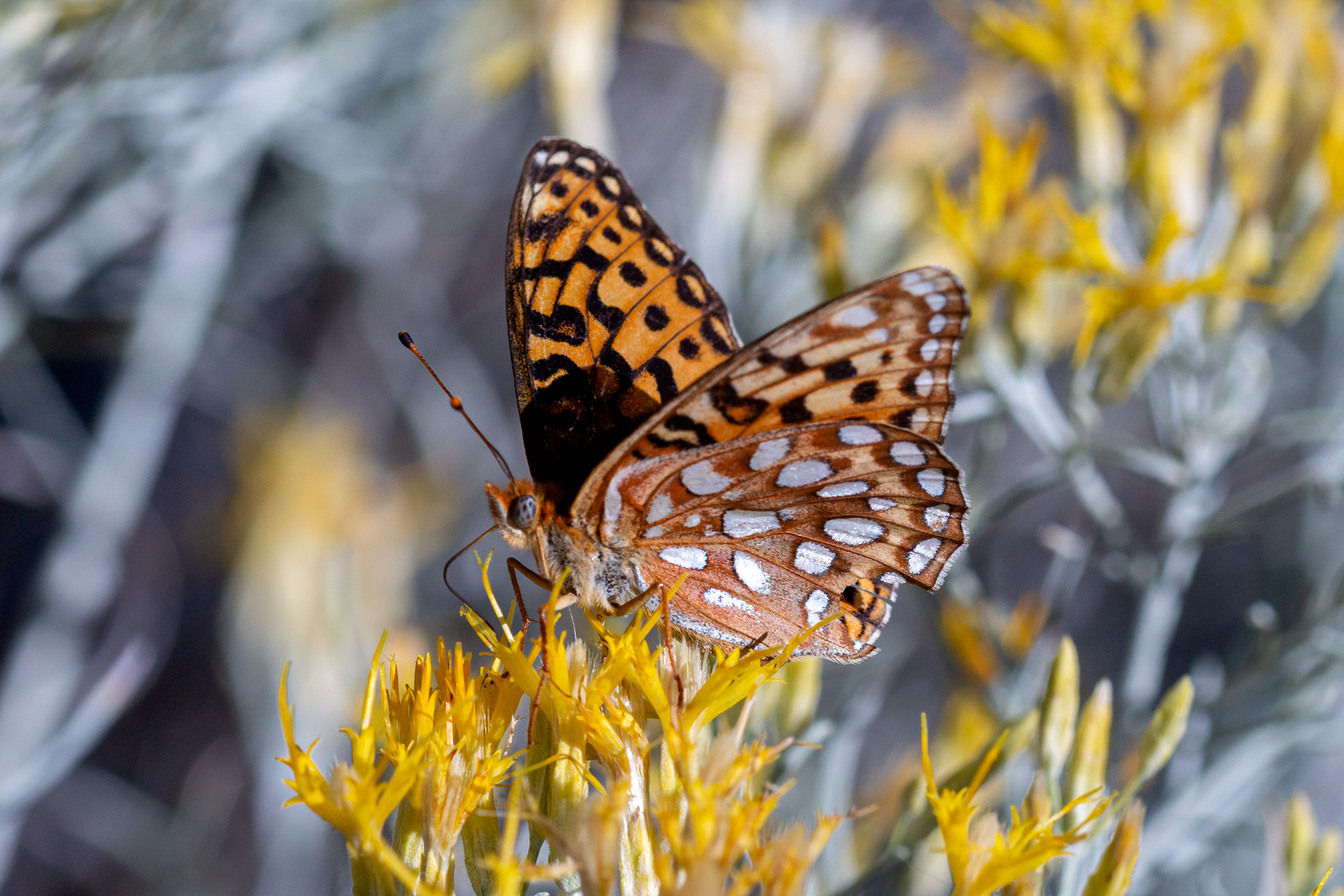
Survey site one – description
The source of my rabbitbrush sightings is from two separate locations. The first location is in my Lolo, MT neighborhood, bulk of my sightings recorded here. Habitat generically characterized as wildland urban interface. Majority of the plants (~70) grow in disturbed soil of elementary school property (photo below), at the toe of a Bitterroot Mountain foothill (valley floor at 3200’ elevation). Lesser numbers scattered in nearby “parks” (maximum space between any group of shrubs is about 300 yards); established in the neighborhood as open space covenants. The parks consist of native grasses and forbs with scattered Ponderosa Pine and Western Juniper. All exhibit varying degrees of degradation by cheatgrass, smooth brome and knapweed invasion. Distance to the riparian corridor of the Bitterroot River measures about one mile to the east. Lolo National Forest boundary is about 1.75 mile to the west, essentially montane in nature with increasing density of Ponderosa Pine within a matrix of grassland and shrub.
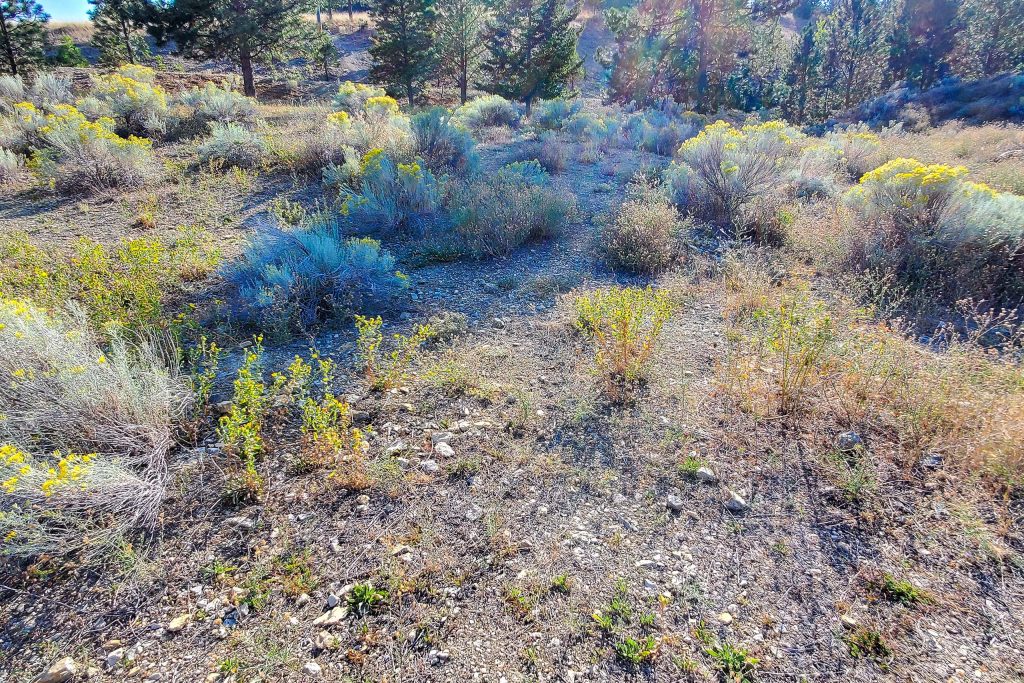
Survey site two – description
The second location for rabbitbrush is a Montana State Trust Land about 8 miles southeast of Stevensville, MT. This Sapphire Mountain foothill tract is 160 acres in size with elevation ranging from 4200 – 4600 feet. It is grassland (cool season bunchgrasses and forbs), shrub steppe habitat (photo below). Mountain Big Sagebrush (Artemisia tridentata) is the dominant shrub component with much lesser amounts of Rubber Rabbitbrush and Green Rabbitbrush (Chrysothamnus viscidiflorus) present. Habitat management consists of cattle grazing. There’s no sign of past prescribed or wildfire activity. Invasive plants present with the native component dominant and mostly intact.
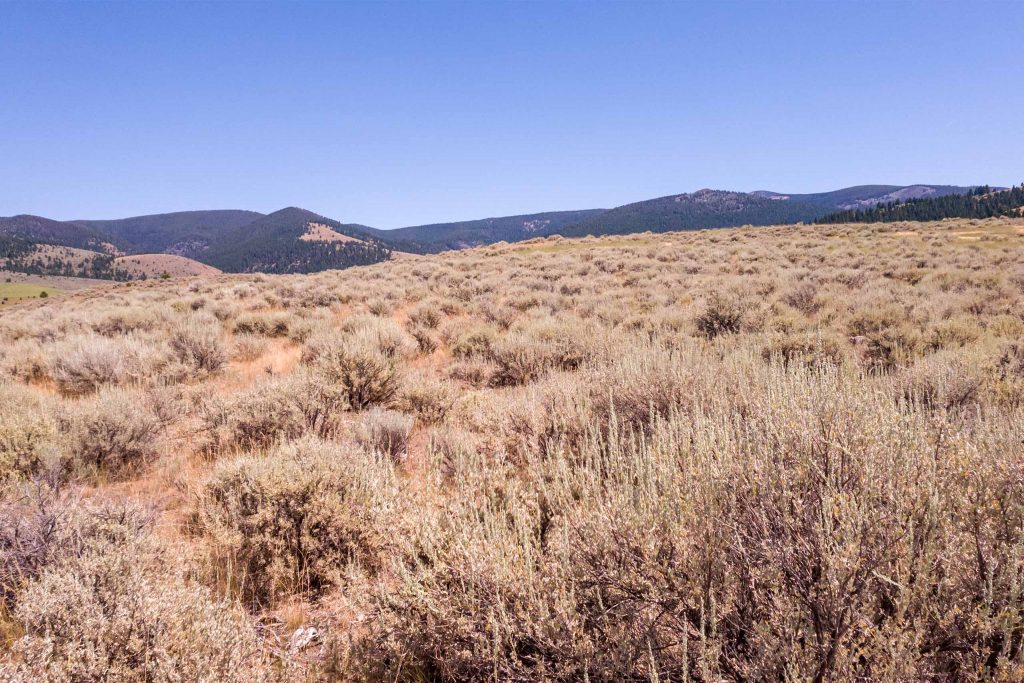
Rubber Rabbitbrush nectar attracts butterflies
I can’t recall if I purposely looked for rabbitbrush or if it was serendipity finding butterflies using rabbitbrush. My earliest photographs dated August 2012. I was a novice back at that time. My whole intention was finding and photographing lepidoptera. Like any beginner, I wanted to learn butterfly identification. Nine years elapsed checking out this shrub and I accumulated 2,281 photos of butterfly usage of rabbitbrush. The photo numbers should persuade you the best place to find butterflies during August, September is on flowering rabbitbrush. The information compiled and shared in this post was not a formal intention from the start nor did it adhere to typical academic research protocols. However, little has changed since Caldwell’s 2014 observation: “published advice about attracting butterflies seemed to me to be unhelpfully scattered and vague”…especially concerning Rubber Rabbitbrush. From my perspective rabbitbrush: is an important nectar source for late summer butterflies; certainly could be a component in garden plantings; reliably attracts butterflies.
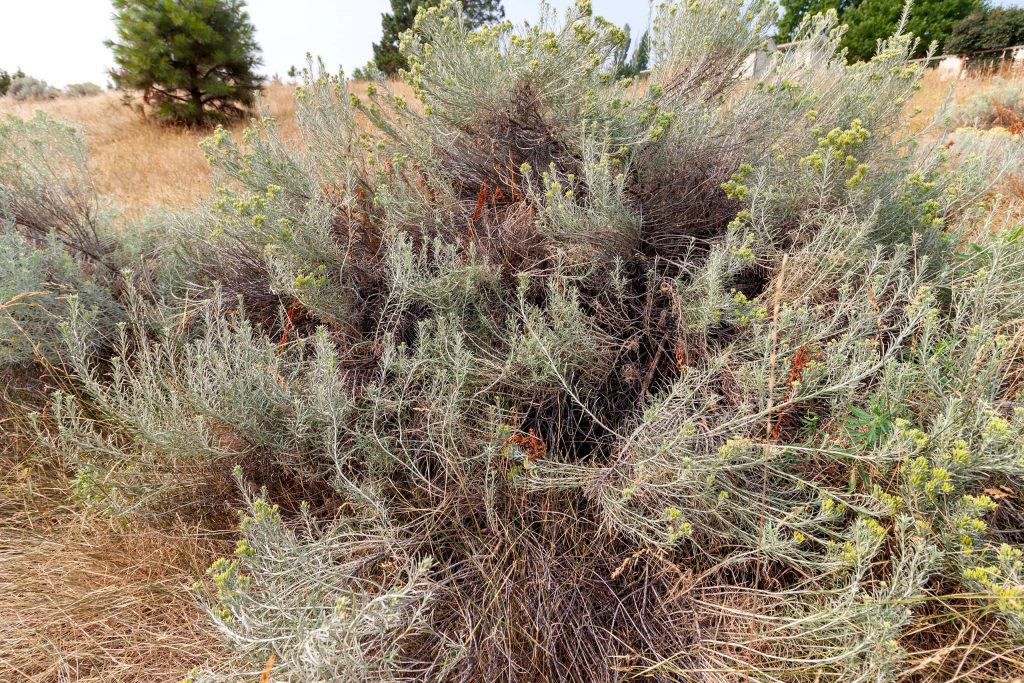
Natural History
Identification
Rubber Rabbitbrush is a perennial, native warm season shrub and classified in the Composite family. Several subspecies grow in western U.S differing slightly in form (U.S. Forest Service – Plant of the Week by Sarah Malaby). The following is a broad description allowing recognition of this shrub. Can grow to eight feet in height and appears rounded in silhouette. Stems originate from plant base covered in felt-like covering of white hairs. Narrow leaves (reminiscent of Douglas Fir leaves in form) measuring up to 2 inches long are also densely covered in white hairs. Four to six yellow, tubular disk flowers bloom at the end of twigs. Inflorescence is rounded.
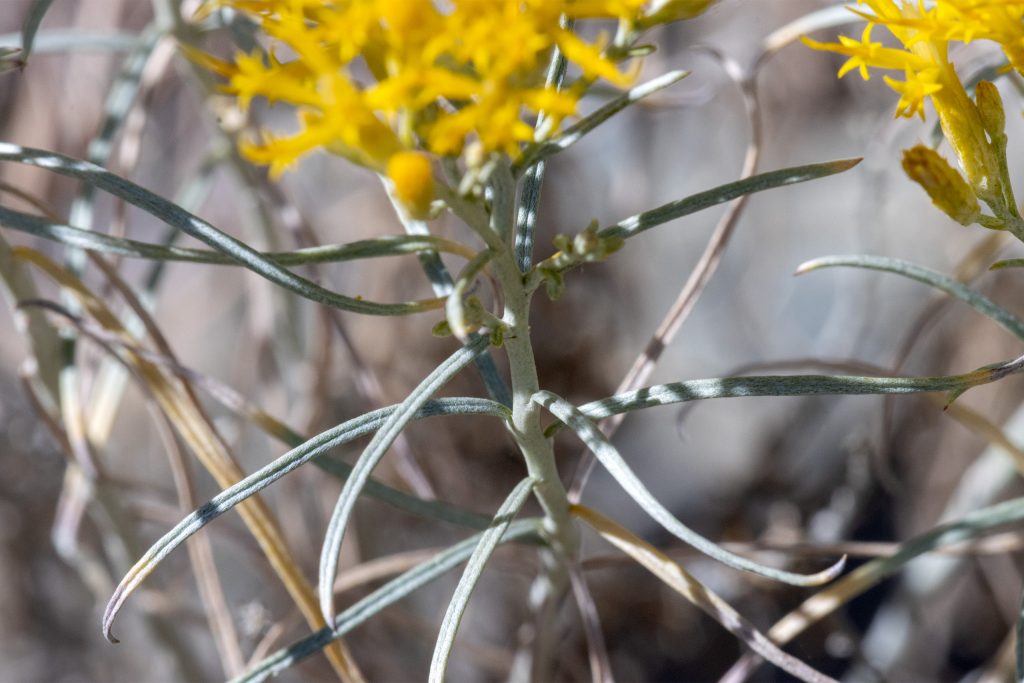
Ecology
This shrub grows widely in the American West described as arid environments, montane grasslands and/or disturbed soil sites. Rubber Rabbitbrush grows fast “reaching maturity in 2 to 4 years, and has a lifespan of 5 to 20 years” (Plant Fact sheet for Rubber Rabbitbrush 2010). It is not aggressive and eventually is replaced by other community species. Found in climates with 7 – 18 inches of moisture at elevations measuring 450 to 8,000 feet (Plant Fact sheet for Rubber Rabbitbrush 2010 ). Malaby (U.S. Forest Service – Plant of the Week 2010) notes: “It thrives in poor conditions, and can tolerate coarse, alkaline soils.” Blooming starts in late July and continues into October. Peak butterfly use locally is mid-August.
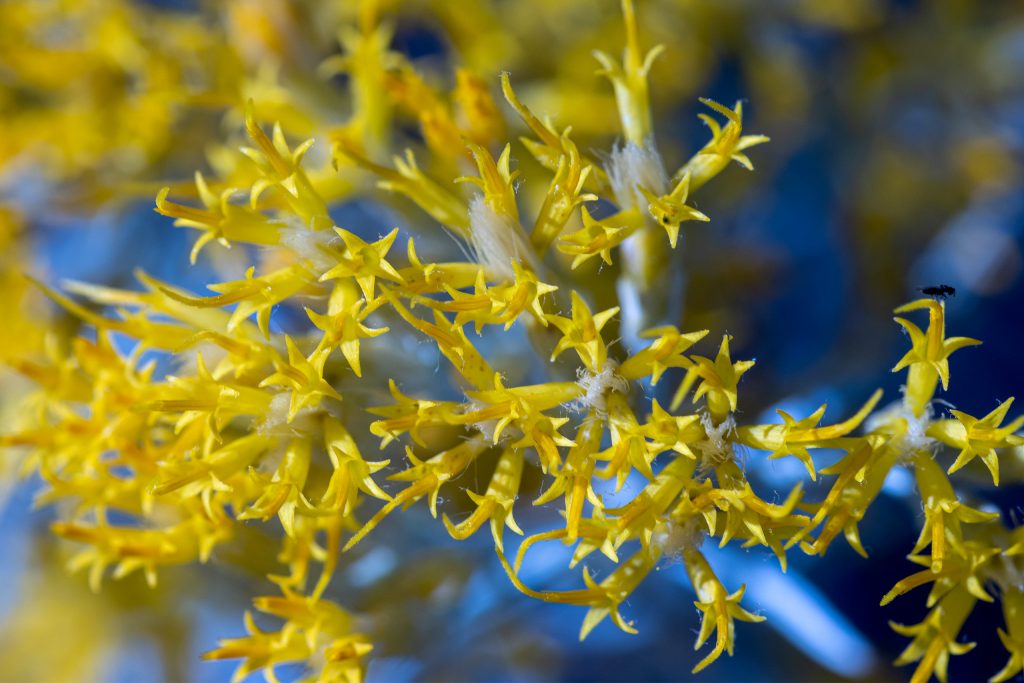
Call to Action
Susan Tweit (2016) authored Plant Rubber Rabbitbrush for Its Brilliant Blaze of Gold in Fall as advice for planting this shrub in your garden. Main points asserted: tolerates heat, cold, drought and poor soils; attracts pollinators; thick cover for wildlife; brilliant gold color in late summer/fall and cool silver-green color in spring/early summer; tall backdrop for other garden plantings. She quotes author Lauren Springer Ogden’s take on rabbitbrush: “the last bar open” for a host of pollinators.
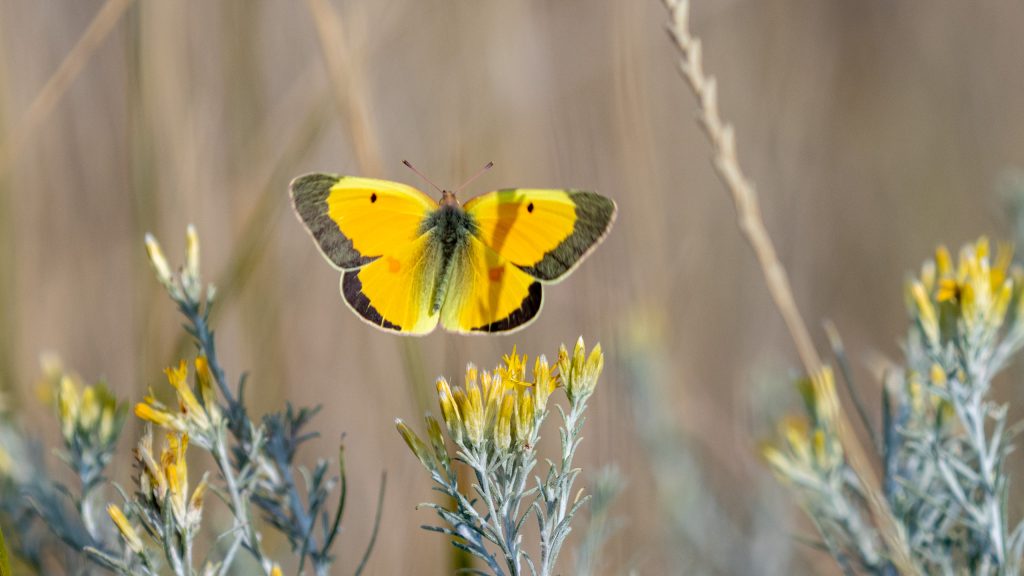
Butterflies nectar from Rubber Rabbitbrush. So plant rabbitbrush in your garden or visit public spaces that support this native shrub. Have your camera ready to capture the butterfly action during late summer into fall.
Reference
Hurwitz, J. (2018). Butterfly Gardening The North American Butterfly Association Guide. Princeton and Oxford: Princeton University Press

